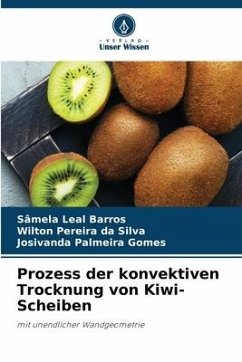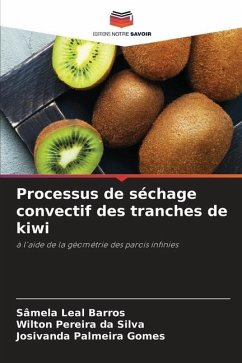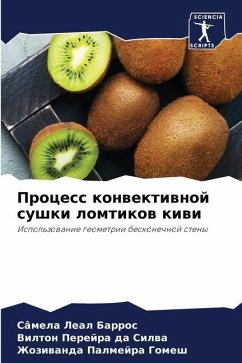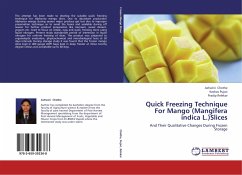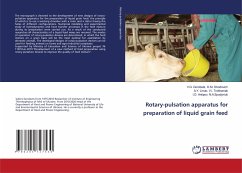
Process of Convective Drying of Kiwi Slices
Using Infinite Wall Geometry
Versandkostenfrei!
Versandfertig in 6-10 Tagen
40,99 €
inkl. MwSt.

PAYBACK Punkte
20 °P sammeln!
The present work aimed to evaluate the influence of the variables of the osmotic dehydration process, using different temperatures (40, 50 and 60 °C) and different sucrose concentrations in the solutions (40, 50 and 60 °Brix) and convective drying of kiwi slices cv. Hayward (40, 50 and 60 °C) on the chemical, physical and physicochemical characteristics of the final product, besides evaluating the suitability of empirical and diffusive mathematical models for the description of the drying process using infinite wall geometry and first and third type boundary conditions. The mathematical mod...
The present work aimed to evaluate the influence of the variables of the osmotic dehydration process, using different temperatures (40, 50 and 60 °C) and different sucrose concentrations in the solutions (40, 50 and 60 °Brix) and convective drying of kiwi slices cv. Hayward (40, 50 and 60 °C) on the chemical, physical and physicochemical characteristics of the final product, besides evaluating the suitability of empirical and diffusive mathematical models for the description of the drying process using infinite wall geometry and first and third type boundary conditions. The mathematical models of Lewis, Wang and Singh, Henderson and Pabis, Page, Peleg and Silva et alii, were fitted to the experimental data obtained using the curve fitting software LAB Fit. For the analytical solution of the diffusion equation, the software "Prescribed Adsorption-Desorption 2.2" and "Convective Adsorption-Desorption 2.5" were used, which use the boundary conditions of the first and third type, enabling the determination of Biot number, effective diffusivity and convective mass transfer coefficient.



